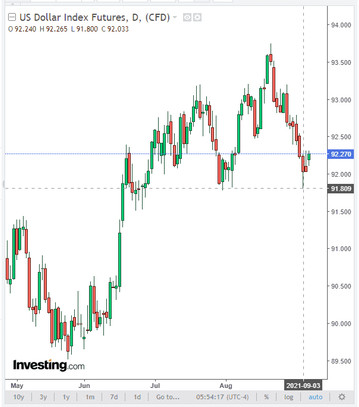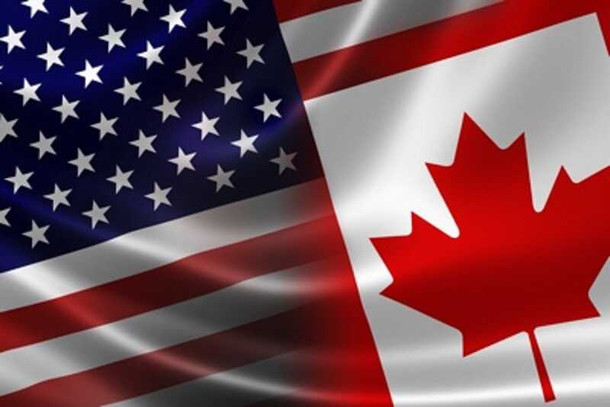As a result of today's meeting, the Reserve Bank of Australia decided to leave the key interest rate at 0.10%, while maintaining the target for government bonds at the same level of 0.10%.
At the same time, the leaders of the RBA decided to start reducing weekly purchases of government bonds. The buyback program will now amount to A $ 4 billion per week (up from AU $ 5 billion previously) until at least mid-February 2022. RBA Governor Philip Lowe promised that "the RBA will review the volume of bond purchases in mid-February", noting a sharp deterioration in economic conditions.
Lowe reaffirmed the central bank's intentions not to raise interest rates before 2024.
Many economists have already called this decision by the RBA to cut the volume of stimulus erroneous. Conversely, a weaker national currency and lower bond yields due to an increase in the quantitative easing program would help to achieve monetary policy goals in terms of inflation and employment, therefore, in their opinion, the central bank should have announced an increase, rather than a reduction in asset purchases.
The Australian dollar reacted with a sharp decline, including against the US dollar, to the RBA's decision. However, other major commodity currencies are also declining against the USD. Among them is the Canadian dollar. USD / CAD is growing ahead of the Bank of Canada meeting on Wednesday, recovering from previously reached local lows near 1.2494 amid weakening USD after the publication of monthly data from the US labor market last Friday.
As you know, the number of new jobs created outside of agriculture in the United States amounted to 235,000 in August, and the unemployment rate fell to 5.2%. Thus, the growth in the number of jobs in August was much lower than the forecast and the indicators of July, when 1.1 million jobs were created, and June, when the number of jobs increased by 962,000.
Now, according to many economists, the slowdown in the recovery of the country's labor market amid a sharp increase in the number of cases of Covid-19 infection may force the Fed to delay the decision to curtail asset purchases.
Nevertheless, as can be seen from the current dynamics of the US dollar, market participants considered its weakening over the past 2 weeks to be excessive.
On Tuesday, the USD strengthens again, while the DXY dollar index rallies. As of this writing, DXY dollar futures are traded near 92.27, 47 points above the local 9-week low of 91.80 reached late last week.

This week, 2 more of the world's largest central banks (Bank of Canada and ECB) are deciding on their monetary policies. The ECB meeting will be held on Thursday, and the decision on the interest rate of the Bank of Canada will be published on Wednesday (at 14:00 GMT).
According to data released by the National Bureau of Statistics in late August, Canada's GDP contracted 1.1% in the second quarter (on an annualized basis), while economists had forecast its growth by 2.5%. Many economists have lowered their forecast for the growth of the Canadian economy in 2021.
The negative effects of the coronavirus on the Canadian economy and the country's labor market, as well as the weakness of the housing market, are putting pressure on the Bank of Canada to further ease monetary policy.
However, the Bank of Canada is expected to keep its interest rate at 0.25% at its meeting on Wednesday.
The harsh tone of the accompanying statement by the Bank of Canada on rising inflation and the prospects for further tightening of monetary policy will cause the Canadian dollar to strengthen. If the Bank of Canada signals the need for soft monetary policy, the Canadian currency will decline.
At the same time, the Canadian dollar receives strong support from oil prices, which maintain positive dynamics and have resumed growth since August 23 (Canada is the largest oil exporter, and the share of oil and petroleum products in Canada's exports is approximately 22%).
Despite some uncertainty in the oil market due to the spread of the delta strain of coronavirus, many leading economists predict an increase in demand in the second half of 2021, if the relaxation of quarantine restrictions and the pace of vaccinations gain momentum. This may have a positive effect on the quotes of oil products and the Canadian dollar. But this impact on the Canadian dollar needs to be seen in the medium to long term. In the short term, the Canadian dollar and the USD / CAD pair will be influenced by tomorrow's decision by the Bank of Canada.
If the bank's executives decide to cut the stimulus policy or to start the period of interest rate hikes soon, the Canadian dollar may rise sharply, retaining the potential for further strengthening, including in the USD / CAD pair.
However, it is most likely that the leaders of the Bank of Canada will refrain from such a step, which could cause an increase in USD / CAD. Much will also depend on the rhetoric of their accompanying statements. On Thursday, when (at 16:00 GMT) the speech of the head of the Bank of Canada Tiff Macklem begins, market participants may receive new information regarding the bank's immediate plans.
His tough tone will help strengthen the Canadian dollar. The soft rhetoric of Tiff Macklem's speech and the propensity for soft monetary policy will negatively affect the CAD quotes.
Macklem will also likely explain Wednesday's decision on the interest rate by the Bank of Canada and may provide some guidance for investors ahead of the next meeting of the central bank, which will probably take place at the end of next month.





